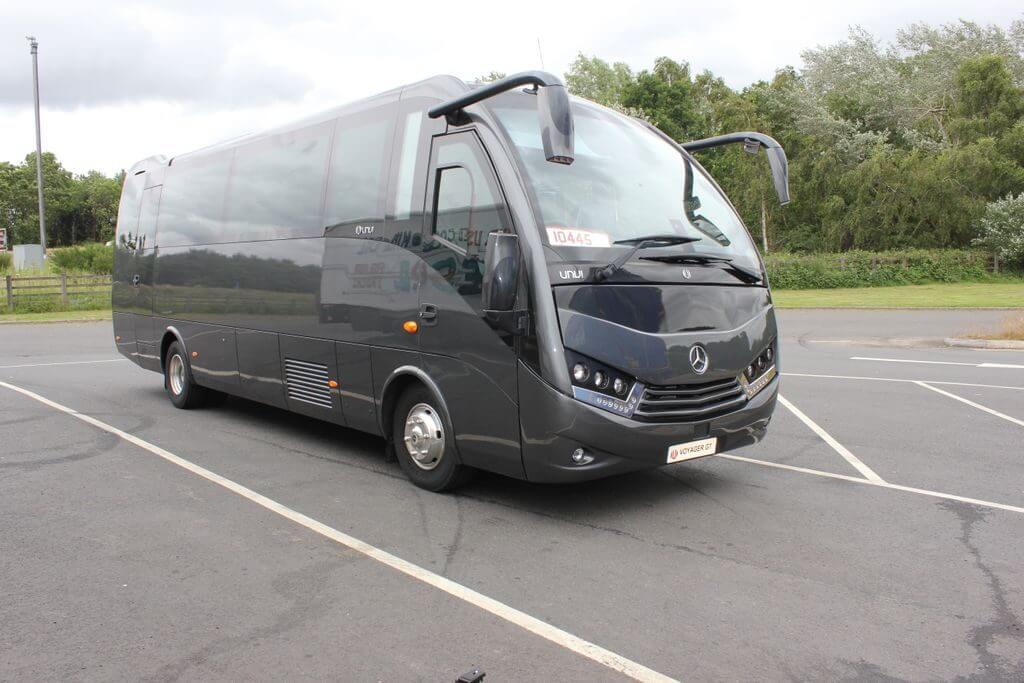
Two decades on from the sale of the first UK-specification UNVI LoGo, the distinctive Spanish coachbuilder appears to be going from strength to strength. Ken Mann wonders what the latest version of its Voyager midi brings to a crowded marketplace, and asks the crucial question: can it deliver?
‘Avant-garde’ might be one way of describing the styling of UNVI’s Voyager midi coach. ‘Over-wrought’ is, perhaps, another label the assessors of aesthetics could select. ‘Distinctive’ seems like the middle ground.
Don’t get me wrong, though. The latter description is territory that in this instance comes without any implied tone of faint praise. Bold – even disruptive among the ‘me too’ entries to this now burgeoning segment – but neither offensively so nor in any way holding back on individuality. To focus entirely upon the form of an automotive product conceived primarily for enterprising function and financial gain would be to miss the point, of course. ‘Different’ isn’t a qualification on its own. But bear with me on the style topic – there is practical context in, and under, this particular skin.
[…]
By subscribing you will benefit from:
- Operator & Supplier Profiles
- Face-to-Face Interviews
- Lastest News
- Test Drives and Reviews
- Legal Updates
- Route Focus
- Industry Insider Opinions
- Passenger Perspective
- Vehicle Launches
- and much more!


